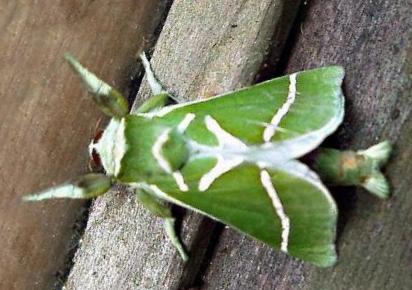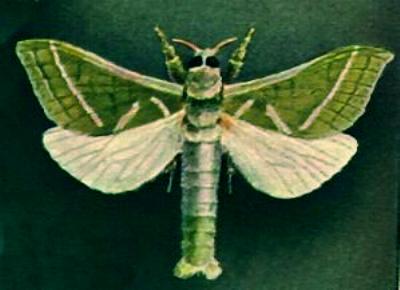The eggs of this species are laid on the bark of a foodplant.
The young Caterpillars when they hatch, bore horizontally into the
the stem and then downwards to make a vertical tunnel in which they live.
They cover the opening and surrounding stem with a bag of silk and wood fragments,
and emerge nocturnally to feed on the bark under the bag.
These caterpillars are off-white, with a dark brown hairy head, and a brown thorax.
The back of each abdominal segment has two pale brown dashes,
and each segment is creased.
Elm ( Ulmus,
ULMACEAE ).
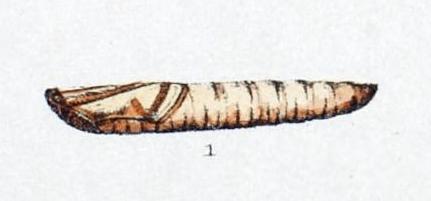
pupa, drawing by Harriet Scott, listed as Phloiopsyche venusta,
Australian Lepidoptera, Volume 1 (1864), Plate 2,
image courtesy of Biodiversity Heritage Library,
digitized by
Australian Museum.
The caterpillars grow to a length of about 4 cms.
They pupate in their tunnel near the opening, with the head uppermost.
The pupa is cylindrical, with a length of about 5 cms.
The adult moths emerge in early summer.
The male adult moth has green forewings,
with a series of white diagonal stripes across each one.
The hindwings are a shiny pale grey colour.
The abdomen is mauve where the wings cover it,
but the end segments are green.
He has a wingspan of about 5 cms.

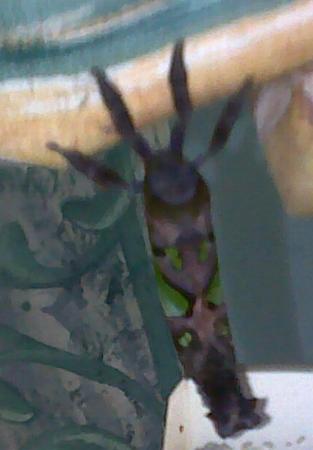
Female
(Photos: courtesy of Sean Cleal, Sydney)
The female adult moths differ from the males.
The females are larger and have brown forewings
which have variable green patches,
and paler rusty-brown hindwings.
They have a wingspan of about 7 cms.
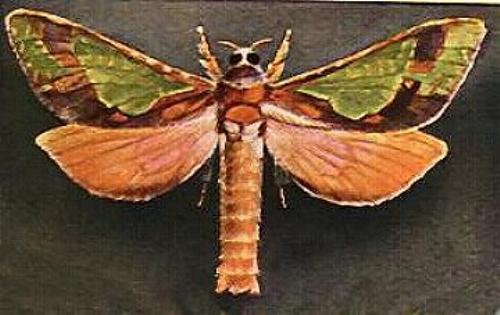
Female
drawing by E.H. Zeck, listed as Charaga lignivora,
in Walter W. Froggatt: Forest insects of Australia,
Sydney 1923, Frontispiece, fig. 3b,
image courtesy of Biodiversity Heritage Library,
digitized by NCSU Libraries.
The species occurs in:
Western Australia.
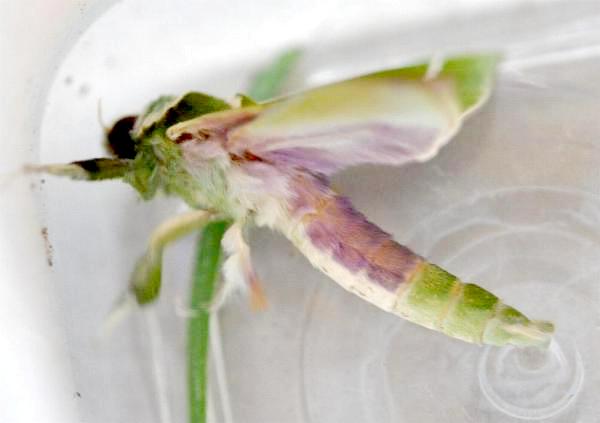
Male, showing underside
(Photo: courtesy of
Laura Levens,
Upper Beaconsfield, Victoria)
Further reading :
Ian F.B. Common,
Moths of Australia,
Melbourne University Press, 1990, pls. 2.10, 2.11, pp. 67, 147.
Walter W. Froggatt,
The Smaller Green Wood Moth,
Forest insects of Australia,
Sydney 1923, p. 47.
Axel Kallies,
Moths of Victoria - Part 6,
Ghost Moths - HEPIALIDAE and Allies,
Entomological Society of Victoria, 2015, pp. 12-13, 14-15.
John William Lewin,
Prodromus Entomology,
Natural History of Lepidopterous Insects of New South Wales,
London : T. Bensley (1805), p. 17, and
Plate 16.
Peter B. McQuillan, Jan A. Forrest, David Keane, & Roger Grund,
Caterpillars, moths, and their plants of Southern Australia,
Butterfly Conservation South Australia Inc., Adelaide (2019), pp. 38-39.
Harriet, Helena, and Alexander W. Scott,
Australian Lepidoptera and their Transformations,
Australian Lepidoptera,
Volume 1 (1864), pp. 5-6, Plate 2.
Thomas J. Simonsen,
Splendid Ghost Moths and their Allies,
A Revision of Australian Abantiades, Oncopera, Aenetus, Archaeoaenetus and Zelotypia (Hepialidae),
Monographs on Australian Lepidoptera Volume 12,
CSIRO Publishing, Melbourne, 2018.
(updated 8 December 2012, 1 February 2025)



